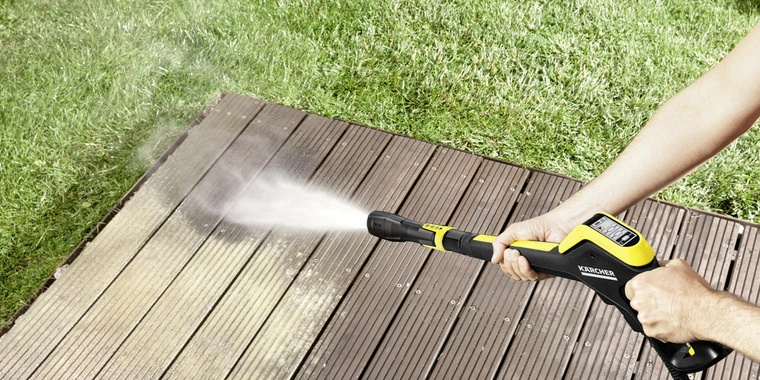A home pressure washer is an extremely useful tool. Wash your car? No problem. Remove dirt and dust from a garden path. Easy. In general, such a device will find its use in everyday life. But how does such a washer work? Let’s figure it out.
Structure and principle of operation
As you can understand from the name, the main principle of such a wash is to build up pressure and affect it on water. As a result, water bursts out of the nozzle at such a speed that it easily knocks down not only light dust but even heavy old deposits. At the same time, the treated surfaces remain undamaged when used correctly with the right attachments.
The operation of a high-pressure washer is as follows:
- Water enters the sink through the water intake hose and ends up in the internal tank. The water in it is affected by a high-performance pump, which creates pressure. The pump is quite classic – it is an electric motor to which pistons are attached. The pressure is limited by a sensor, which switches off the pump when the desired value is reached.
- As soon as we pull the trigger, water rushes out through the hose at a tremendous speed. Accordingly, the pressure in the inner tank begins to drop.
- The sensor signals the pump about the pressure drop. It starts working again. The pressure is pumped up again using pistons.
Some sinks are convenient because they pump water themselves thanks to a built-in pump, while others need some kind of pressure. Fortunately, you can get out of this situation using a container located on a small elevation. Such sinks can be used in a summer house or garage where there is no central water supply.
important: Top Pressure Washing Contractors in Tracy, CA! Restore your property’s shine with expert cleaning services. Affordable rates & fast results. Contact us today!
Appearance and completeness
Despite the same operating principle, sinks can vary greatly in cost and appearance. Let’s take an inexpensive device and take a closer look at it.
Each sink is equipped with hoses for water inlet and outlet. The first is the most common water supply hose. If it breaks down or gets lost, it can be easily replaced with the same one from the washing machine.
But the second hose is not so simple: it is designed for high pressure and contains a metal mesh inside. That is why it seems so rigid. A spray gun is installed on it.
It usually has removable tubes that are held in each other by special grooves. With these tubes, you can lengthen or shorten the gun, as well as install various additional equipment on it.
The sinks are also equipped with a foaming agent. It should be filled with a special detergent, which turns into active washing foam. However, cheap devices come with rather mediocre foaming agents, which you don’t want to use at all. They consume a huge amount of detergent, and the foam is still not dense. Fortunately, you can buy them separately.
Additional accessories
In addition to the complete accessories, there are third-party ones. For example, a rotating brush will help wash the car to a shine much faster and cleaner.
You can also install a regular brush, which will be convenient for washing not only the car but also the carpet.
And here is a third-party foam generator, with a normal adjustable nozzle that forms dense foam.
Nuances of use
When using a pressure washer, it is better not to bring the sprayer too close to the surfaces – there is a risk of damaging the paint. The best option is not to immediately direct the stream at the object, but first test it by directing it into the air or the ground.
Also, don’t forget about the noise that can disturb others. Even the simplest sinks are quite loud.
important: Looking for Pressure Washing Contractors in Brentwood, CA? Get professional exterior cleaning with fast and affordable services. Contact us now for a free quote!
High-pressure washer in action
What can I say, let’s see the washer in action. We connect the power supply, supply water, and turn on the device. We press the trigger, adjust the stream, and go ahead.
But washing a car is boring, everyone does it. Let’s wash the walk-behind tractor, which has just plowed a couple of vegetable gardens. It’s not just dust, but real dirt. With grass, roots wrapped around the cutters and garbage. Without a wash, it would take a long time to scrape all this off. Well, let’s get started.
Yes, the result here, as they say, is obvious. The dirt is knocked off the metal, exposing its surface. The roots will have to be unwound by hand, but now it will not be a problem.






